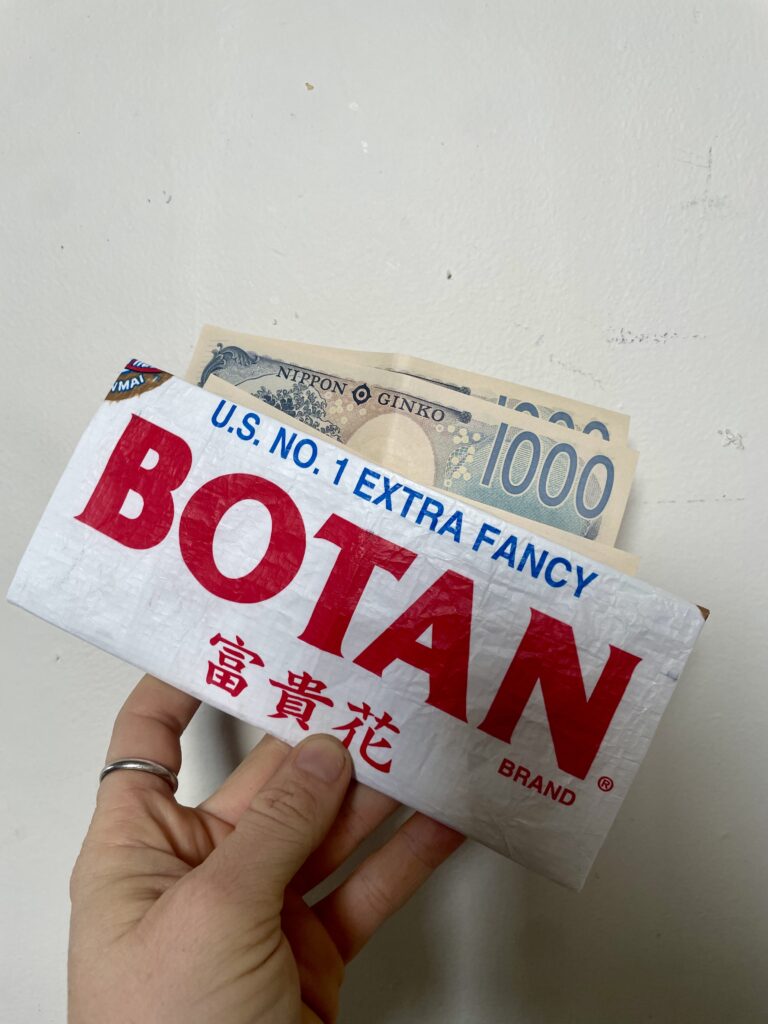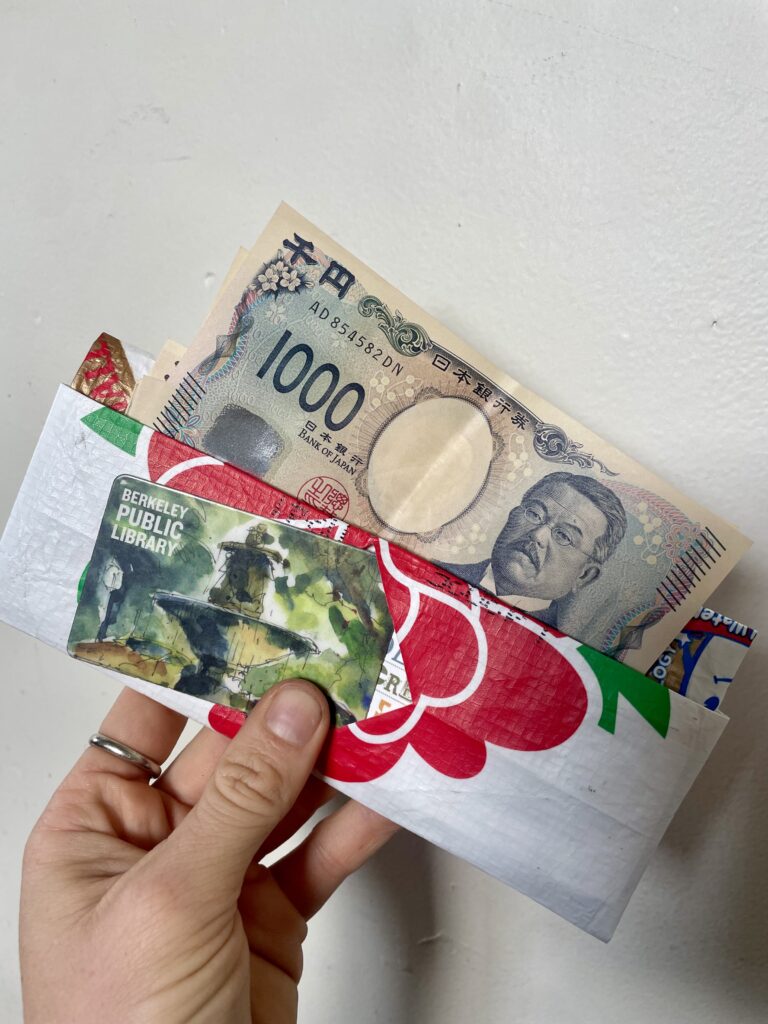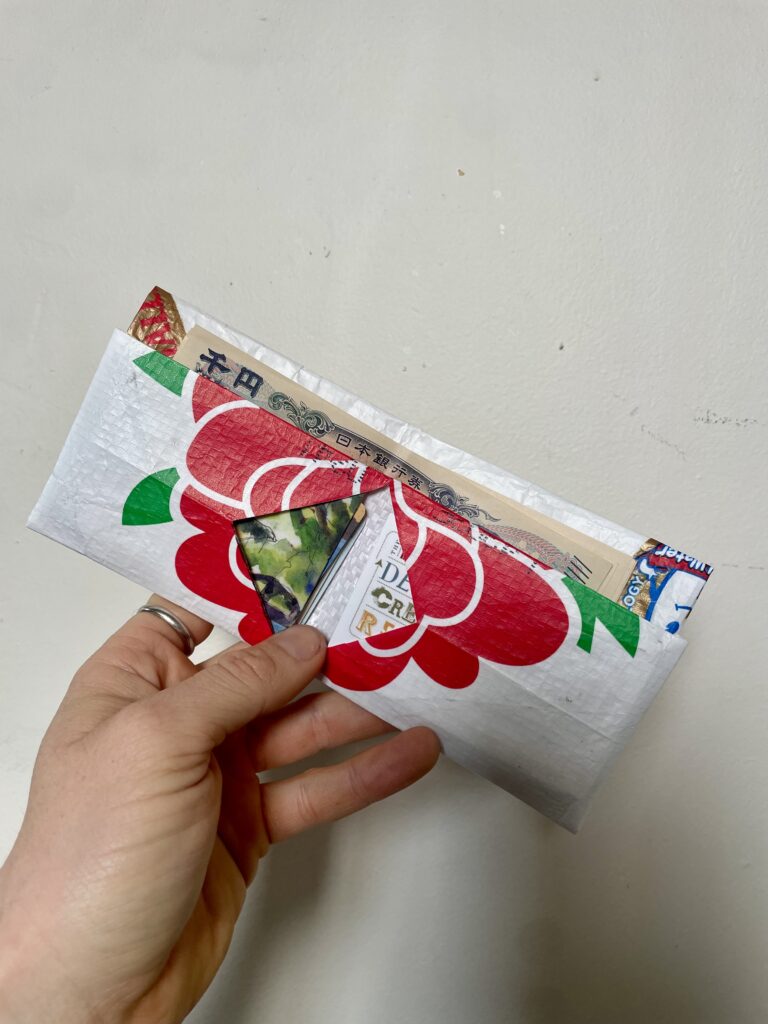
Sometimes it’s hard to let things go. Objects that have proven their worth for so long they’ve almost come to possess their own soul. A favorite pair of blue jeans. A toaster. A car that just won’t die. When, after years of loyal service, they finally give out, you almost want to call a priest, a rabbi, a shaman, whoever. Say some words. Honor their service.
In my case it was a wallet. I had picked up a scrap of canvas some ten years back and brought it to a shoemaker, because he had an industrial machine for stitching the heavier fabric – this was before I knew anything about sewing. Most wallets I found were too bulky, the leather ones especially, and I just needed a simple bifold. He delivered in a week.
Love is too strong a word for the affection I had for that wallet. But professional respect would do. It long outlasted the shoemaker’s business – a pity, since I’m now better able to appreciate the craft of which he was capable. But being made of canvas, the hard edges of plastic cards eventually wore it away at every corner. And I had requested the wallet be made to fit my habits of the time, which included American dollars.
Which meant there was a snag in its continued service should I bring it to Japan. Because while the larger denominations of the Japanese yen are about the same length as the American dollar, they are substantially wider. Which means that anything from a thousand yen note upwards sticks awkwardly out the top of an American wallet like a bulldog’s underbite. If I wanted a wallet that would fit Japanese bank notes, I would need to make one. And, in all honesty, it was time to retire the canvas wallet anyway. It had a hole in the back large enough for both my thumbs. I gave it some words of thanks before slipping both thumbs through the back and tearing it in two. Could I have fixed it? Probably. But sometimes you just have to move on.

I’ve been fascinated for some time with the material used to make bags of rice. A kind of woven, plastic matrix that has suggested all manner of marvelous use and reinterpretation. Shoes. Sailcloth. Rice bags aren’t the only sort of thing made from this material. The most famous other example I can think of are Ikea shopping bags. I’ve learned that such plastic does not hold up for more than a season to daily, direct sun exposure – a garden shade I made from the stuff lasted six months before falling to shreds. But for a wallet, kept largely in a secure, darkened pocket, it seemed suitable.
Naturally, to YouTube, where I found a video tutorial of how to fold an origami wallet. I don’t know all the world’s currencies, but I believe the poster had made their wallet to fit the ruble. Lucky for me this wallet also fit dollars. So I folded a few practice wallets out of paper, tested the dimension and durability. To the first, they were excellent. To the second, they were pitiful. Just a few times sliding credit cards in and out and they were already demolished. But I eat a lot of rice. And I have a hard time throwing away something I could imagine – maybe, possibly – using some day. I mean, I still have all my old iPhone boxes. So who knows?
My sister had come to visit just prior to my departure and gifted me some ¥30,000 – about $200 – so I sacrificed one empty rice bag for the sake of experiment, which was successful, if slightly off center. Rather than use the bold logo of the Botan rice company of California as the signature banner, the outward facing element showed a recipe for beef and rice, but only half. Plus, it didn’t hold together quite well enough. Oh, it tolerated the abrasion of a credit card being rapidly inserted and withdrawn. Unlike the paper prototype, it would likely get second degree burns before tearing. But the short edges at the side were too loose. A fold suitable for paper was not up to this sturdier material. Further revision was needed.
A little longer here, a bit wider there, and I had the wallet I needed. It’s now been one month in Japan, and this wallet has yet to show the wear. Plus it makes a very satisfying slap when closed, akin to the old flip phones, signaling the conclusion of commerce.
I’m not quite at the point yet where I can think in yen. I still – mostly – have to convert the figure to dollars, at an exchange of about ¥150 to $1. But I’m getting better. A thousand yen dinner is a bargain. Three hundred yen is what you can expect for most one way metro tickets. Seven hundred yen for a beer is reasonable if it’s a small, local brewery, though four hundred is more typical if it’s from a big one like Kirin or Asahi. But if you’re paying six hundred yen for a cup of coffee, those beans better have gone to Harvard.
I’m not sure I’ll get to the point I can fully think in yen. Certainly not in this visit. But at least now I have a wallet large enough to hold them.
